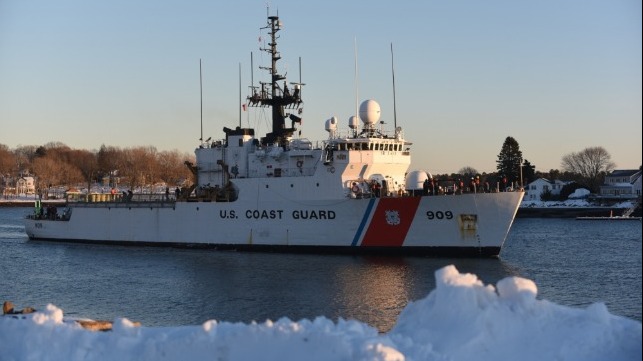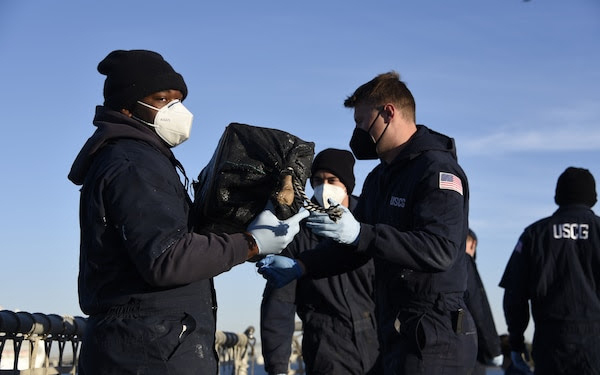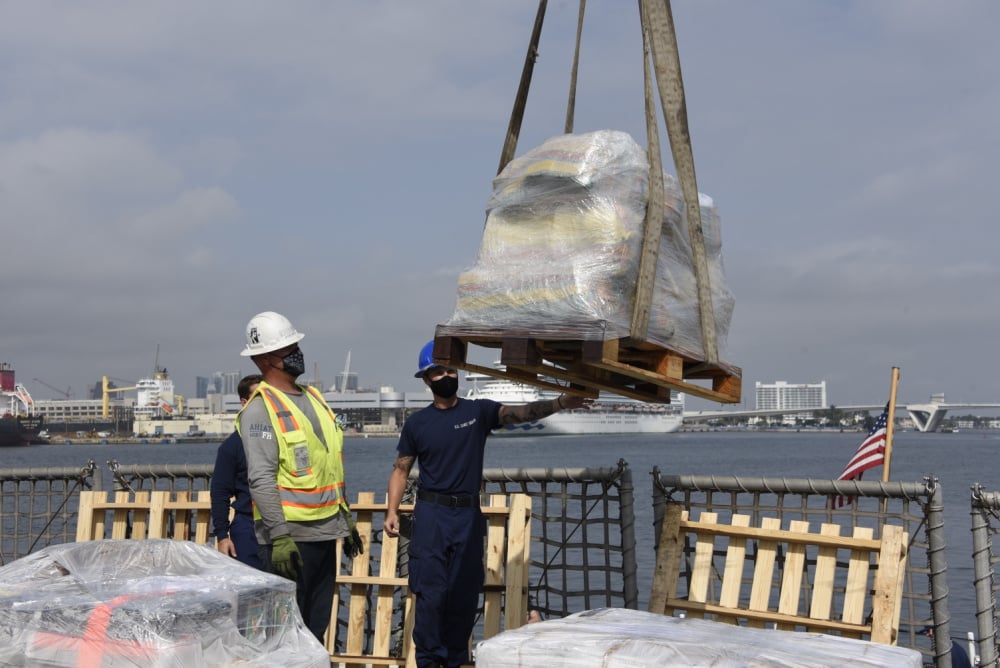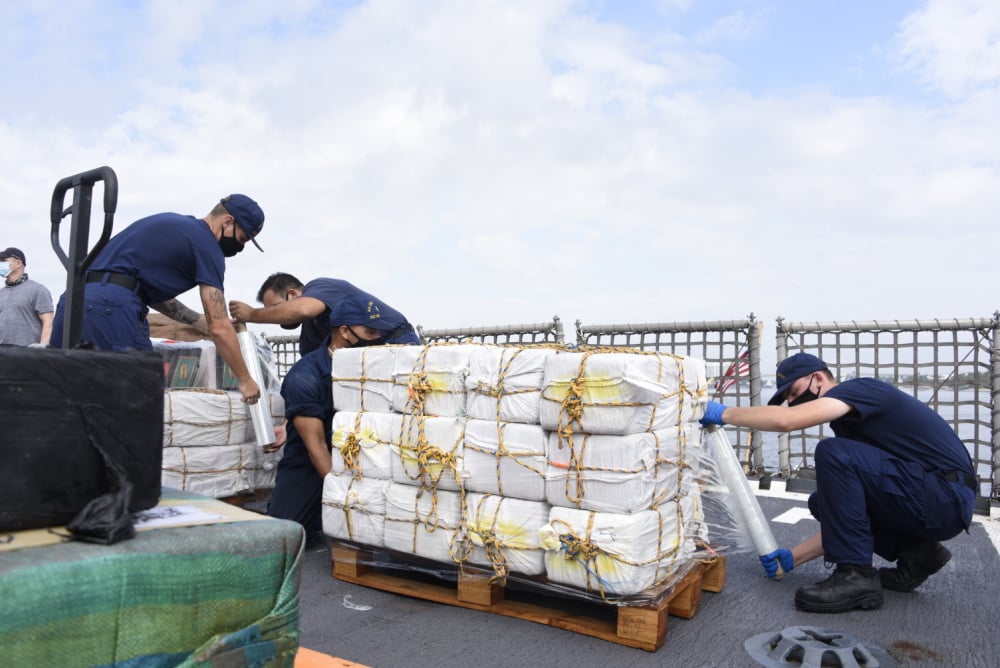Two USCG Cutters Seized $220 Million in Illegal Drugs

The U.S. Coast Guard is marking a big week in its increased counter-narcotics operations in the Western Hemisphere working with numerous U.S. agencies to disrupt the flow of illegal narcotics. Two Coast Guard cutters returned to base with a combined total of more than 22,000 pounds of drugs with an estimated value of more than $220 million.
The cutter Campbell, a 270-foot medium endurance cutter, returned to Kittery, Maine, on February 8, following a 63-day counter-narcotics patrol in the Eastern Pacific Ocean. During the patrol, the Campbell's crew navigated over 12,000 nautical miles, conducted 122 flight operation evolutions, transited the Panama Canal, and crossed the equator into the Southern Hemisphere.
At the end of her mission, the Campbell's successful law enforcement operations interdicted or disrupted over 11,600 pounds of cocaine worth an estimated $215 million. She also apprehended six suspected international narcotics smugglers including several difficult situations with the low profile vessels (LPV) that have become the most challenging vessels used by the smugglers.
During one interdiction, a bridge lookout on the Campbell, using night vision detection, sighted an LPV l transiting near the cutter. Upon detection, the Campbell launched their 26-foot Over the Horizon pursuit boat to intercept the LPV with an embarked law enforcement boarding team. Campbell's boarding team assumed positive control of the vessel, took aboard three suspected smugglers, and seized 4,400 pounds of cocaine.
During another seizure, the Campbell detected a second LPV whose crew jettisoned its contraband after being spotted by aerial surveillance. The Campbell redeployed the Dolphin helicopter team and stopped the LPV with disabling fire directed into the four outboard engines. The Campbell's crew was able to locate and recover the discarded packages, yielding an at-sea weight of 4,415 pounds of cocaine.
The Campbell's final case was also detected by aerial surveillance. They used the Dolphin helicopter and OTH cutter boat to pursue a 35-foot panga-style "go-fast" vessel traveling at 30 knots with no navigation lights, fuel barrels, and cargo on deck in a known drug trafficking corridor. The Dolphin crew fired warning shots, bringing the vessel to a stop and retrieved 2,791 pounds of cocaine.

Campbell off-loading the seized drug in Port Everglades (U.S. Coast Guard)
"Success during a narcotics patrol requires every member of the collective team to focus on the mission at hand, remain adaptable, and be forward-leaning in executing the mission," said Capt. Thomas Crane, the Campbell’s commanding officer. “We have a great team aboard Campbell focused on preventing the flow of illegal narcotics to North America. We were able to accomplish our goal and support the Coast Guard's Western Hemisphere Strategy despite being away from family.”
Not all of the efforts, however, were interdicting narcotics. While patrolling, a crewmember spotted a sea turtle caught in fishing gear, struggling to dive. The Campbell took time from her missions to launch its OTH pursuit boat, and a team was able to free the Olive Ridley Sea Turtle from the debris.
The Campbell made a stop in Port Everglades on February 4 to off-load the more than 11,600 pounds of cocaine followed four days later by a second medium endurance cutter USCGC Harriet Lane homeported in Portsmouth, Virginia which had seized more than 11,800 pounds of cocaine and marijuana worth more than $206 million.
The combined missions of the two cutters resulted in 14 interdictions that occurred in the Eastern Pacific Ocean involving seven Coast Guard and two US Navy assets.


Drugs being off-loaded by the cutter Harriet Lane i Port Everglades - Photos by Petty Officer 3rd Class Jose Hernandez (U.S. Coast Guard)
